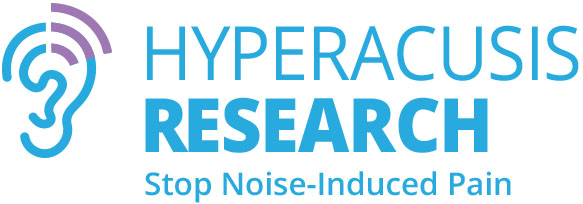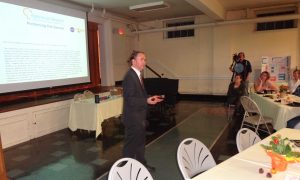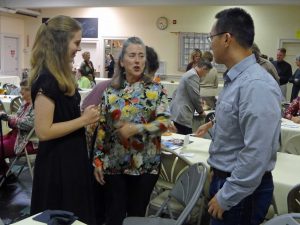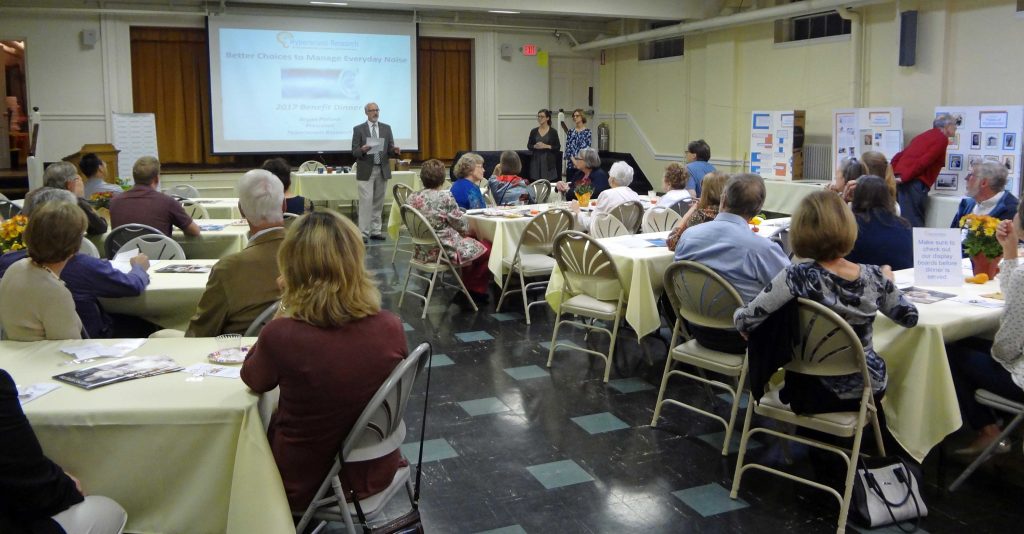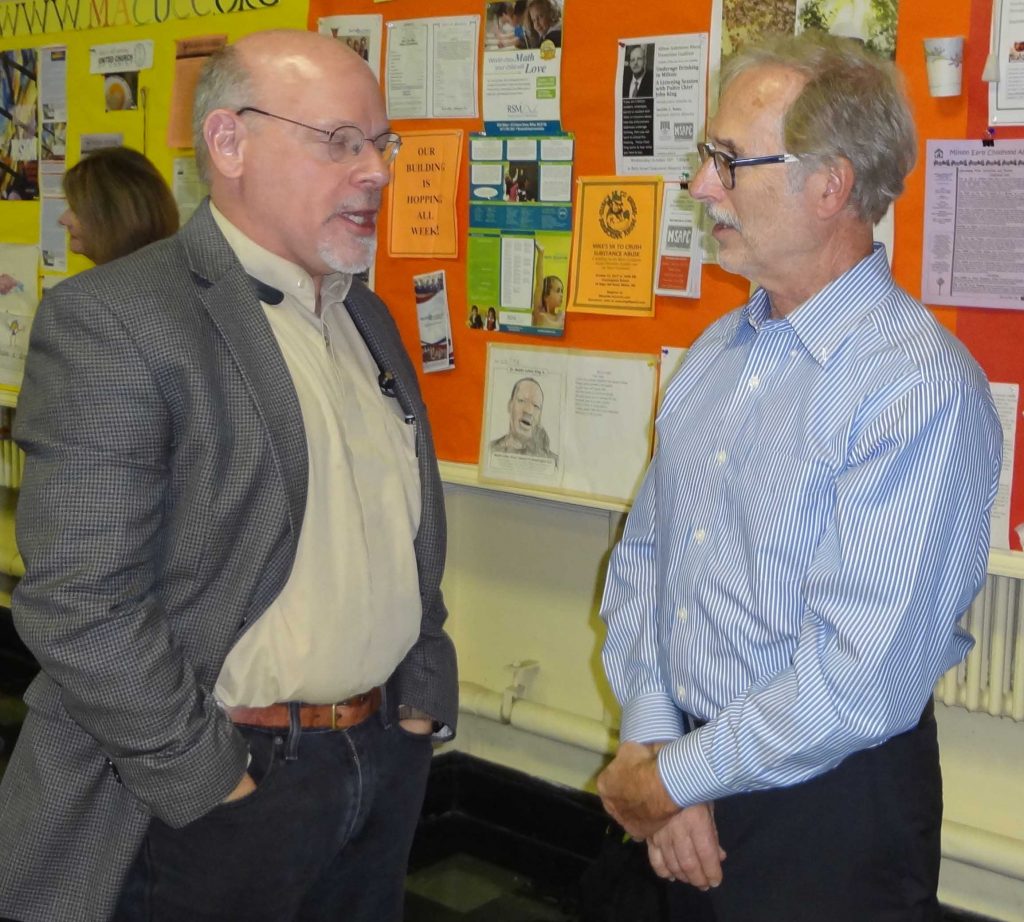The 3rd annual Boston area Benefit Dinner was a tremendous success! Together, we raised more than $17,000 for research to find a cure for hyperacusis. We can’t thank you enough! With your help, we are moving closer to uncovering the mechanisms of hyperacusis and helping more researchers engage in the work to eliminate noise-induced pain.
Pictured at top: Dan Gauger and Bryan Pollard
The evening opened with Dan Gauger, distinguished Engineer at Bose, describing how Bose is working to develop products that give people more control of their environment and communicate more effectively in our noisy world. Of course, Dan had products for individuals to experiment with first hand.
Bryan Pollard, President of Hyperacusis Research, discussed the recent Mass. Eye and Ear Sense-ation Gala. The event highlighted stories of inspiration and hope from patients who gained or regained their sight or hearing from cutting-edge solutions at Mass. Eye and Ear (MEEI).
Only one condition was highlighted in the closing segment for a new area of research focus – hyperacusis — and featured a video showing Tom Maholchic’s story. Following the video, Hyperacusis Research board member Michael Maholchic and his wife Betsy took the stage to describe what life has been like at home and why research is needed to find a cure for Tom. Bryan explained that the support from Hyperacusis Research, which has funded two Emerging Research Grants (via our partner the Hearing Health Foundation), provided an important foundation to make this focus area for MEEI possible.
Xiying Guan, a postdoctoral research fellow of Mass. Eye and Ear, gave an overview of the auditory system. Xiying described how the original understanding that most hearing loss results from hair cell damage has recently been shown to miss another key factor. The auditory neural connections are more fragile than hair cells, and damage to these connections (which is not evident in normal audiograms) likely occurs well before hair cell loss. This underscores the reason why protection from loud sounds is essential. Xiying concluded by briefly reviewing his hyperacusis research focused on conductive hyperacusis (see summary here)
Bryan finished the night with a new video telling the story of a teen girl whose life has been dramatically altered by noise-induced hyperacusis. While highlighting the progress of Hyperacusis Research, which has funded six research grants, we need to continue the work so that Tom and Cindy and all the others whose lives have been put on hold by hyperacusis are cured!
See picture highlights of the evening below.
